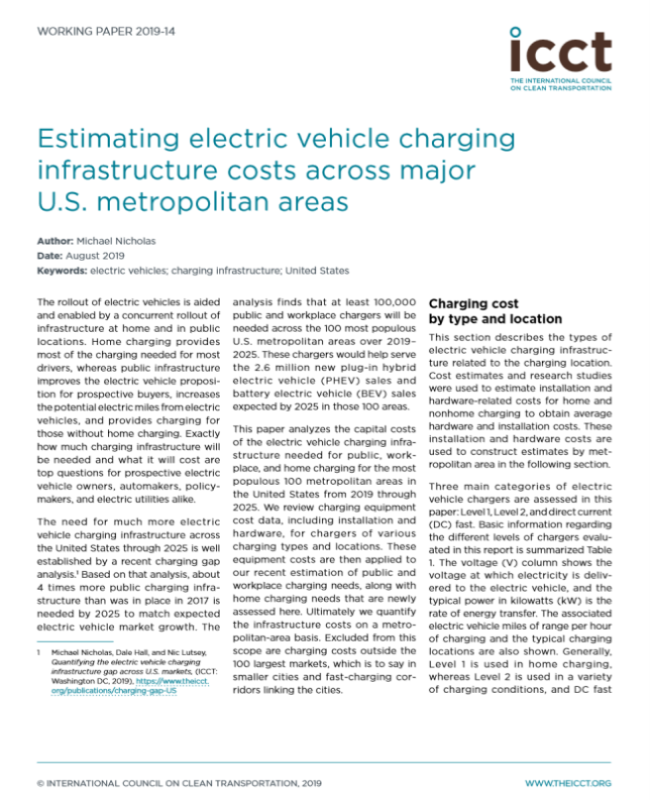This paper analyzes the capital costs of the electric vehicle charging infrastructure needed for public, workplace, and home charging for the most populous 100 metropolitan areas in the United States from 2019 through 2025.
The analysis revealed:
- Substantial charging infrastructure investments are needed to match expected electric vehicle market growth.
- Infrastructure costs are relatively modest—and steadily decrease—on a per-electric-vehicle basis, due to public chargers becoming more heavily utilized, the shift to more outlets per charging site, and decreased hardware costs as the market grows.
- Investing in home charging will remain important.
Although state-level utility support is growing, city and state funding for charging is generally limited. Cost-sharing federal and local funding would help leverage limited funding to help fill the charging gap and allow local authorities to align the federal support with their own action plans. Federal grants, perhaps directed at cities that demonstrate high electric vehicle uptake, comprehensive electric vehicle action plans, and city policies could also be effective.
Preview the report here:
 Loading...
Loading...
More About this Resource
Date: August 13, 2019
Type: Research Reports
Countries: United States
States: None
